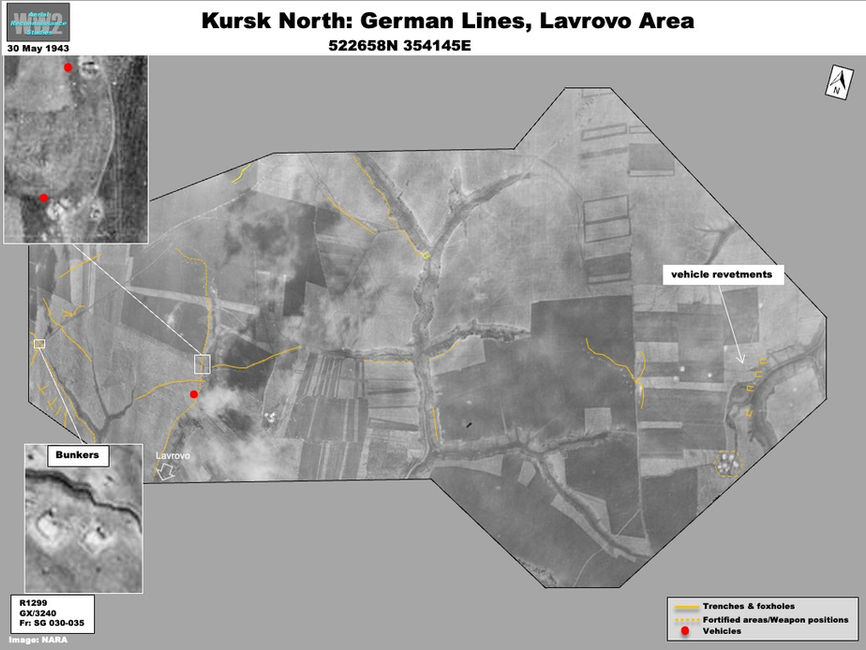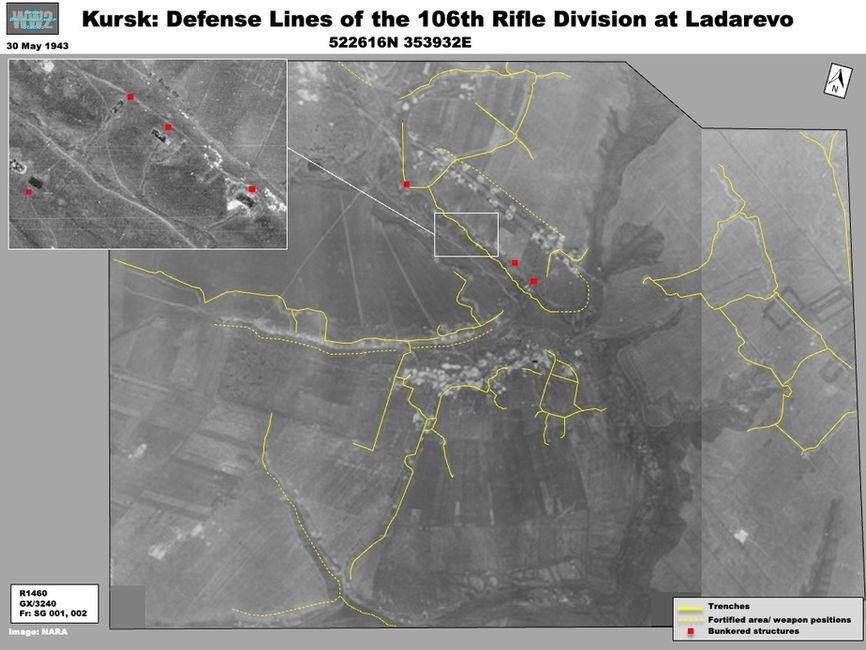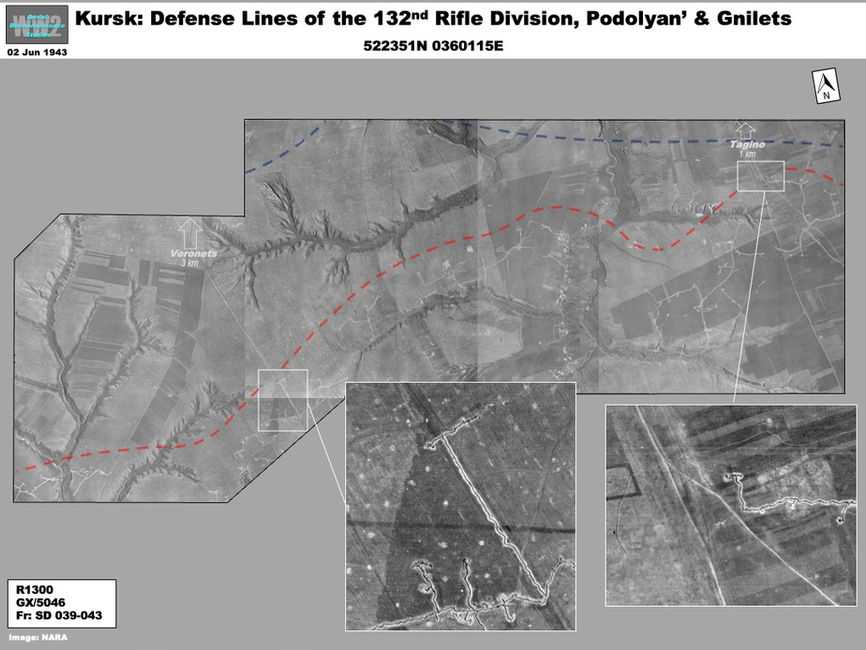WW2 AERIAL RECON STUDIES
Eastern Front
Kursk: Soviet Defense Lines, May 1943
While awaiting a German attack against the Kursk salient, the Red Army had time to prepare formidable defenses. Three defense belts, with others to the rear, were established around the perimeter if the salient. The immense scale of the Soviet defense effort around Kursk is hard to visualize, but on 30 May 1943, a Luftwaffe reconnaissance sortie flying over the north face of the salient provided an excellent cross-sectional view of positions between the first and second defense lines.
North Face
The 211th, 280th and 132nd Rifle Divisions occupied positions on the north face of the Kursk salient immediately west of where the Germans finally launched Operation Citadel on 5 July (Map). The 30 May Luftwaffe sortie covered positions of the 211th Rifle Regiment extending more than 6 kilometers behind the front line between the settlements of Grankino and Penno-Byrdino (Map , Graphic). Despite covering a relatively narrow swath of ground, the imagery revealed a layered system of trenches centered on small settlements.
The defenses made use of a dissected terrain with many deep, interlocking ravines. Numerous fortified areas, bunkers, weapons positions and a few vehicles could be seen. It was also notable that no buildings were standing in the most northerly settlements, suggesting they had been razed.
This sortie was somewhat unusual because it imaged German lines, a practice usually avoided for security reasons (Graphics). The German lines were centered around the settlement of Lavrovo, only 2 km north of Grankino. In addition to trenching and bunkers, at least three possible armored vehicles were deployed in positions northwest of Lavrovo.
While in the same area, the sortie singled out positions of the 106th Rifle Division at Ladarevo, on the left flank of the 211th Rifle Division. (Graphic). Positions included several large bunkered structures connected to the trench network.
From the Grankino area, the sortie flew to positions of the 280th Rifle Division in the vicinity of Izmailovo, 17km to the east-southeast. (Graphic). As it was on the right shoulder of the impending German attack, this area was possibly even more fortified than the positions of the 211th. At least two anti-aircraft sites and four possible armored vehicles could be seen. More significantly, a major tank ditch that was under construction 2 km east-southeast of Izmailovo was clear evidence continuing defensive preparations and of plans to counter an armor attack in the area. Possible survey markers for another tank ditch could be seen in front of Izmailovo.
The 132nd Rifle Division, to the right of the 280th, was covered by another sortie on 2 June. In contrast to the positions of the 280th and 211th, defenses within the 132nd area --centered on the settlements of Gnilets and Podolyan'-- appeared somewhat light. Despite lying in more open terrain and along roads from two German-occupied towns (Voronets and Tagino), defenses consisted mainly of connected stretches of infantry trenching (Graphics). There was no evidence of ongoing construction. The only evidence of heavy weapons in the area were three possibly occupied artillery batteries at Podolyan'.
The South Face
Only limited coverage of Soviet defenses on the south face of the Kursk salient was available, but a key defensive area at Pokrovka was imaged on 11 May 1943. Pokrovka lay on the second defense line and was manned by the 51st Guards Rifle Division. The settlement is situated at a key road junction about 25 km southwest of Pokhorovka, where the climactic battle in the south took place on 12 July (Map). Compared to defenses on the north face Pokrovka appeared to be heavily defended. A probable armor company (49th Tank Brigade) was deployed in revetments along the main road into town and about 30 other vehicles were parked or deployed in more forward areas. (Graphic).









